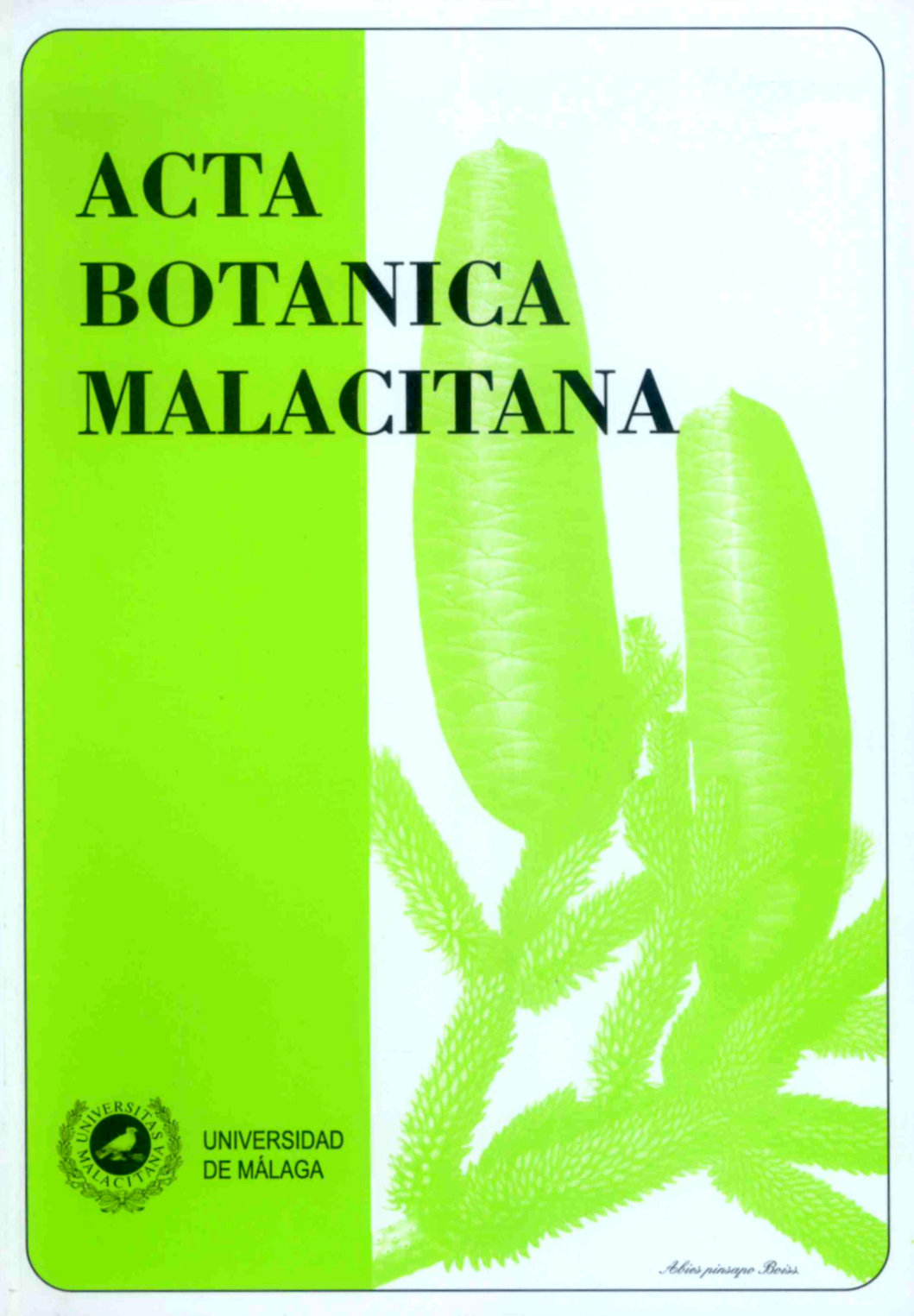Analyse de la biodiversite? floristique des zones humides du Maroc: flore rare, menace?e et halophile.
DOI:
https://doi.org/10.24310/abm.v29i0.7226Abstract
RÉSUMÉ. Analyse de la biodiversité floristique des zones humides du Maroc: flore rare, menacée et halophile. La flore des zones humides du Maroc montre une grande richesse floristique de ces écosystèmes, estimée à plus de 670 espèces et sous-espèces (83 familles) auxquelles s’ajoutent au moins 272 autres considérées plutôt comme terrestres, mais qui peuvent coloniser périodiquement ces milieux. Le taux d’endémisme se rapproche de 6,5 %, mais le fait le plus marquant est la grande proportion des taxons rares ou menacés, évaluée à 34 %. La flore halophile fait l’objet d’un commentaire particulier vu la prédominance de milieux salés au Maroc à la fois par le nombre et par l’étendue des sites. Elle compte environ 115 espèces et sous-espèces réparties entre 20 familles.
Mots clés. Biodiversité, zones humides, flore rare, flore menacée, flore halophile, Maroc.
Abstract. Analysis of the moroccan wetlands floristical diversity: rare, threatened and halophilous flora. The moroccan wetlands flora shows a great floristical richness of these ecosystems, estimated at more than 670 species and subspecies (83 families) which can be supplemented by at least 272 others taxa considered rather as terrestrials but can colonize periodically these biotopes. This flora shows a rate of endemism close to 6,5 %, but the most fact is the great proportion of rare or threatened taxa (estimated at 34%). The halophilous flora was a subjet of particular comment considering the prevalence of the salt biotopes in Morocco, either by the number or the extent of the sites. It counts 115 species and subspecies distributed among 20 families.
Key words. Biodiversity, wetlands flora, rare flora, threatened flora, halophilous flora, Morocco.
Downloads
Metrics
Downloads
Published
How to Cite
Issue
Section
License
Those authors who publish in this journal accept the following terms:
a. The authors will retain their copyrights and guarantee the journal the right of first publication of their work, which will be simultaneously subject to the Creative Commons Attribution-Non-commercial 4.0 license whose full text can be found at <http: // creative commons .org / licenses / by-nc / 4.0> that allows third parties to share the work as long as its author and its first publication are indicated, and as long as it is not for commercial purposes.
b. Authors may adopt other non-exclusive licensing agreements for the distribution of the version of the published paper (e.g., deposit it in an institutional telematic file or publish it in a monographic volume) provided that the initial publication in this journal be indicated.
c. Authors are allowed and recommended to disseminate their work through the Internet (e.g., in institutional telematic archives or on their websites) before and during the submission process, which can produce interesting exchanges and increase citations of the published work. (See The effect of open access)







1.png)
